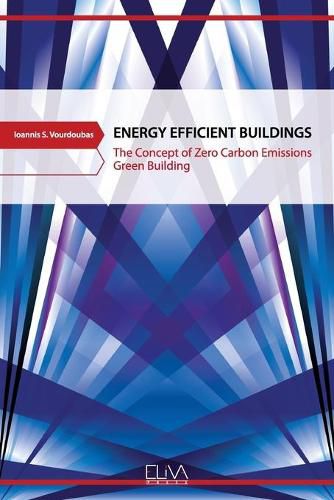Readings Newsletter
Become a Readings Member to make your shopping experience even easier.
Sign in or sign up for free!
You’re not far away from qualifying for FREE standard shipping within Australia
You’ve qualified for FREE standard shipping within Australia
The cart is loading…






Climate change is a severe global environmental problem threatening the sustainability of ecosystems worldwide and causing major catastrophes. Mitigation of climate change requires the sharp decrease of GHG emissions into the atmosphere and many countries are targeting to become carbon neutral by 2050. Buildings utilize large amounts of energy while in Europe they consume 40% of the overall energy use. European directives and legislation in member states promote the increase in energy efficiency and performance of public and private buildings transforming them to nearly zero energy buildings . These green buildings have lower energy consumption, utilize less fossil fuels, more renewable energies while they emit less GHGs. A slightly different concept to nearly zero energy building is the concept of green zero carbon emissions building . These types of energy efficient and green buildings utilize renewable energies to generate the required heat zeroing their carbon emissions. They also generate green electricity for their own consumption while they offset annually the grid electricity use. Current advances in various benign renewable energy technologies allow their use for heat, cooling and electricity generation in buildings. Many of these technologies are mature, reliable and cost-effective. They can be used for green energy generation either on-site or off-site while they can also recharge the electric car’s batteries owned by the building’s residents. The book consists of two parts. The first part includes six papers related with the creation of zero carbon emissions green residential buildings. The second part includes eight papers related with the creation of other types of energy efficient ZCEBs including hospitals, schools, offices, academic institutions, prisons, museums and swimming pools. The book could be useful to architects, engineers, building construction companies and companies manufacturing and installing various renewable energy systems. It could be also useful to public authorities interesting to improve the energy performance in public buildings as well as to policy makers who want to decrease the carbon emissions in the building sector complying with the global efforts for climate change mitigation.
$9.00 standard shipping within Australia
FREE standard shipping within Australia for orders over $100.00
Express & International shipping calculated at checkout
Climate change is a severe global environmental problem threatening the sustainability of ecosystems worldwide and causing major catastrophes. Mitigation of climate change requires the sharp decrease of GHG emissions into the atmosphere and many countries are targeting to become carbon neutral by 2050. Buildings utilize large amounts of energy while in Europe they consume 40% of the overall energy use. European directives and legislation in member states promote the increase in energy efficiency and performance of public and private buildings transforming them to nearly zero energy buildings . These green buildings have lower energy consumption, utilize less fossil fuels, more renewable energies while they emit less GHGs. A slightly different concept to nearly zero energy building is the concept of green zero carbon emissions building . These types of energy efficient and green buildings utilize renewable energies to generate the required heat zeroing their carbon emissions. They also generate green electricity for their own consumption while they offset annually the grid electricity use. Current advances in various benign renewable energy technologies allow their use for heat, cooling and electricity generation in buildings. Many of these technologies are mature, reliable and cost-effective. They can be used for green energy generation either on-site or off-site while they can also recharge the electric car’s batteries owned by the building’s residents. The book consists of two parts. The first part includes six papers related with the creation of zero carbon emissions green residential buildings. The second part includes eight papers related with the creation of other types of energy efficient ZCEBs including hospitals, schools, offices, academic institutions, prisons, museums and swimming pools. The book could be useful to architects, engineers, building construction companies and companies manufacturing and installing various renewable energy systems. It could be also useful to public authorities interesting to improve the energy performance in public buildings as well as to policy makers who want to decrease the carbon emissions in the building sector complying with the global efforts for climate change mitigation.